People collect all kinds of things: pottery and silverware, sure, but also souvenir Statues of Liberty, vintage quilts, geodes, wind-up toy snails, manual typewriters, seascapes, wax fruit, and tiny succulent houseplants. Regardless of the value (or even the quality) of a collection, how it is displayed makes the difference between its being clutter and art. In a curated display, the whole is more than the sum of its parts. Separate objects become a unit that tells a story. This is true whether the collected objects are hung on a wall, placed on a narrow shelf, arranged in a cabinet—or occupy their own gallery wing.
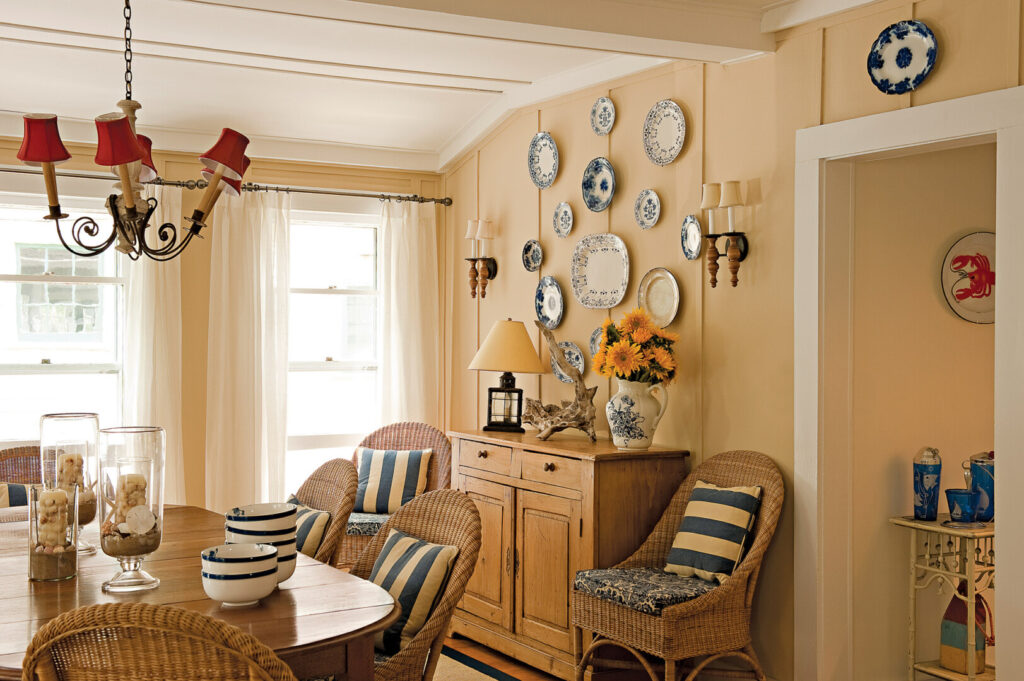
Edward Addeo
The number-one rule in display: Pull objects together. Don’t scatter them around so they lose impact and (gasp) become clutter. “If you put a number of similar objects together, something magical can happen. One is nice, two is better, and three is a collection,” writes John Phifer Marrs, a well-known interior designer and antiquarian who is based in Dallas, in his new book Interiors for Collectors.
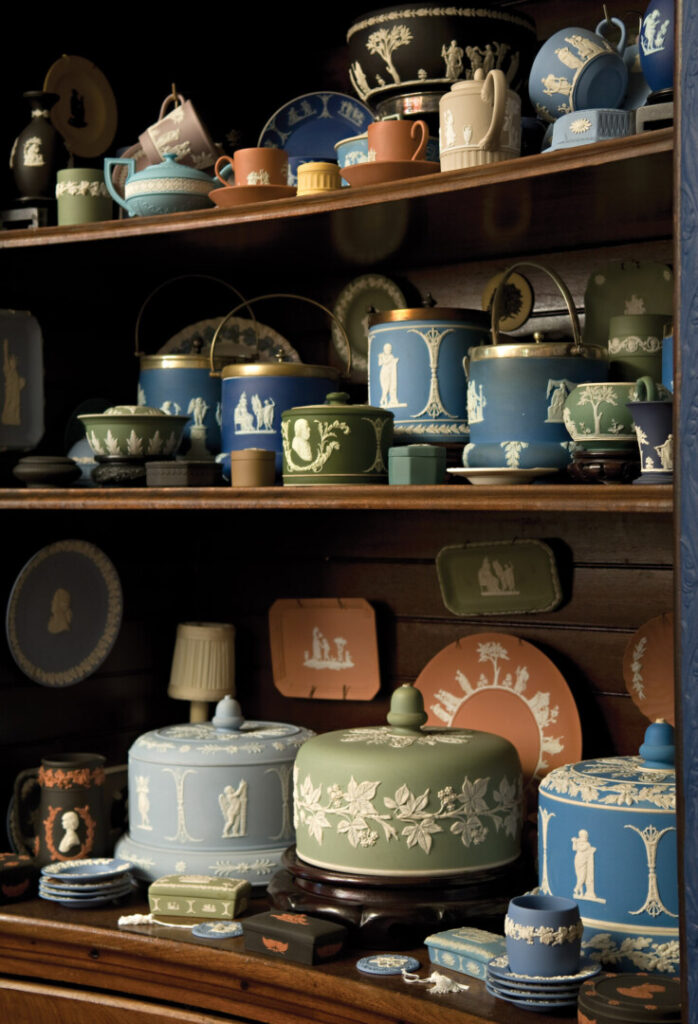
A “collection” comprises various objects that have something in common, whether that be material or type (clay vases), color (jadeite green), age or style (Aesthetic Movement smalls), motif (dragonflies), or shape (cubic). Pulling together objects for a display is step one. Step two is arrangement.
For more than a handful of objects, create a dynamic arrangement employing vertical and horizontal, foreground and background, and varying heights. Colors may be grouped together or mixed with an eye to overall balance.
Symmetry is a key concept, especially for display of formal objects. But one side (of the cabinet, shelf, vignette) need not be a mirror image of the other. Symmetry is about balance, so, in visual heft, two smaller objects equal one larger object placed at the other side of the arrangement. In the photo of the early mantel at right, for example, the platter and candle on one end balance the flower arrangement on the other. The painting above is part of the arrangement; note that a wide inverted V is formed by a line running from one end of the mantelshelf, to the top of the painting, and back to the other end of the shelf.
Vignettes on a tabletop or in a large cabinet are more three-dimensional than linear. Try varying the heights, using nicely bound books as a pedestal if necessary, in triangle-shaped layouts. Arrange objects in groups of three or five, never in even numbers.
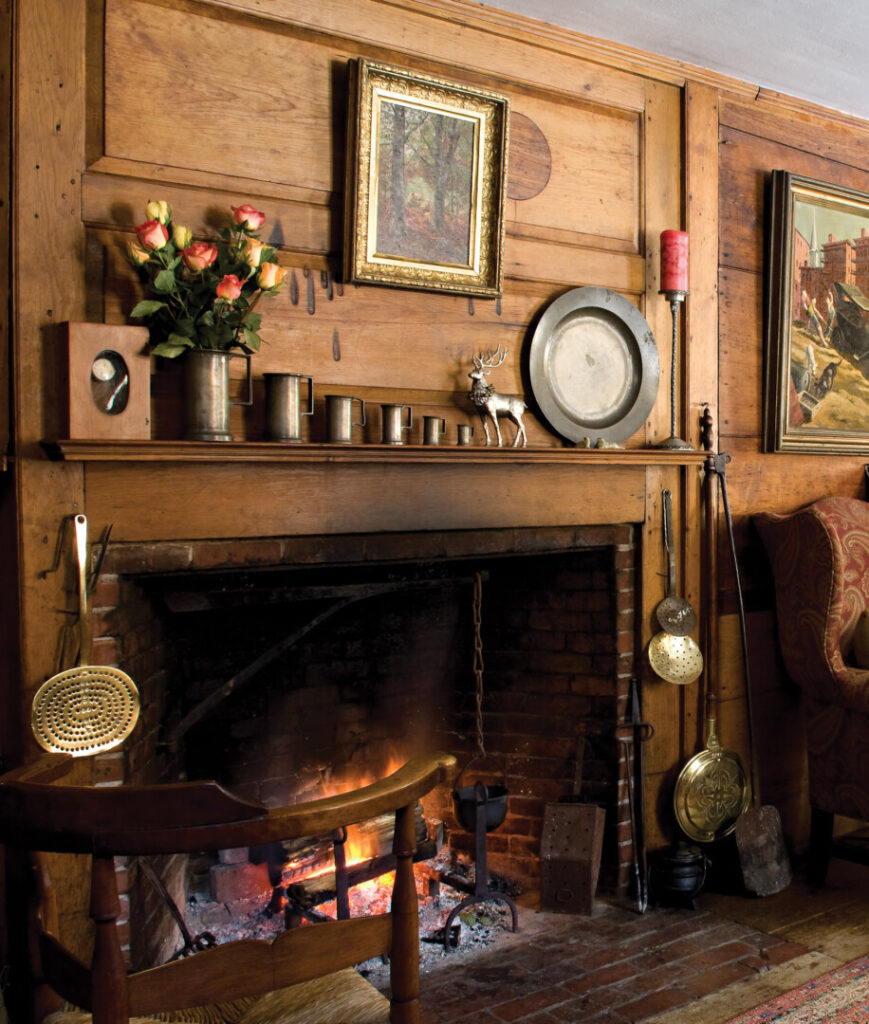
A collection becomes meaningful with context. A group of pretty vases may suggest a style and era. Arranged on a desk of similar vintage near curtains of the same period, the vases are part of the story of the room. Then again… consider the feeling of a collection. Transferware plates may look better in a bedroom papered in toile, rather than in a modern kitchen. Older houses just beg for the display of collectibles, on mantels and plate rails and in antique cabinets. You can add a narrow shelf, too, above a door or window header in a high-ceilinged room. A collection can line a wide hallway. Quilts can hang over the stair rail at a landing. Wall arrangements display plates, paintings, objects set on corbels, etc.
Finally: Many collectibles are breakable. Protect objects from minor earthquakes—or a slammed door. Museum putty (aka earthquake putty) invisibly and reversibly bonds stemware and pottery vases to the shelf. A cabinet may be secured through the back to studs in the wall. (If maiming the cabinet is undesirable, a Velcro strap can secure the cabinet back to a bolt into studs.) Mating strips of Velcro also act as backup to the hanger when used behind paintings. A large ceramic pot may be steadied if a bag of sand is placed inside. Some collectibles, of course, have requirements for temperature and humidity. Look online for companies specializing in museum-level display cases.
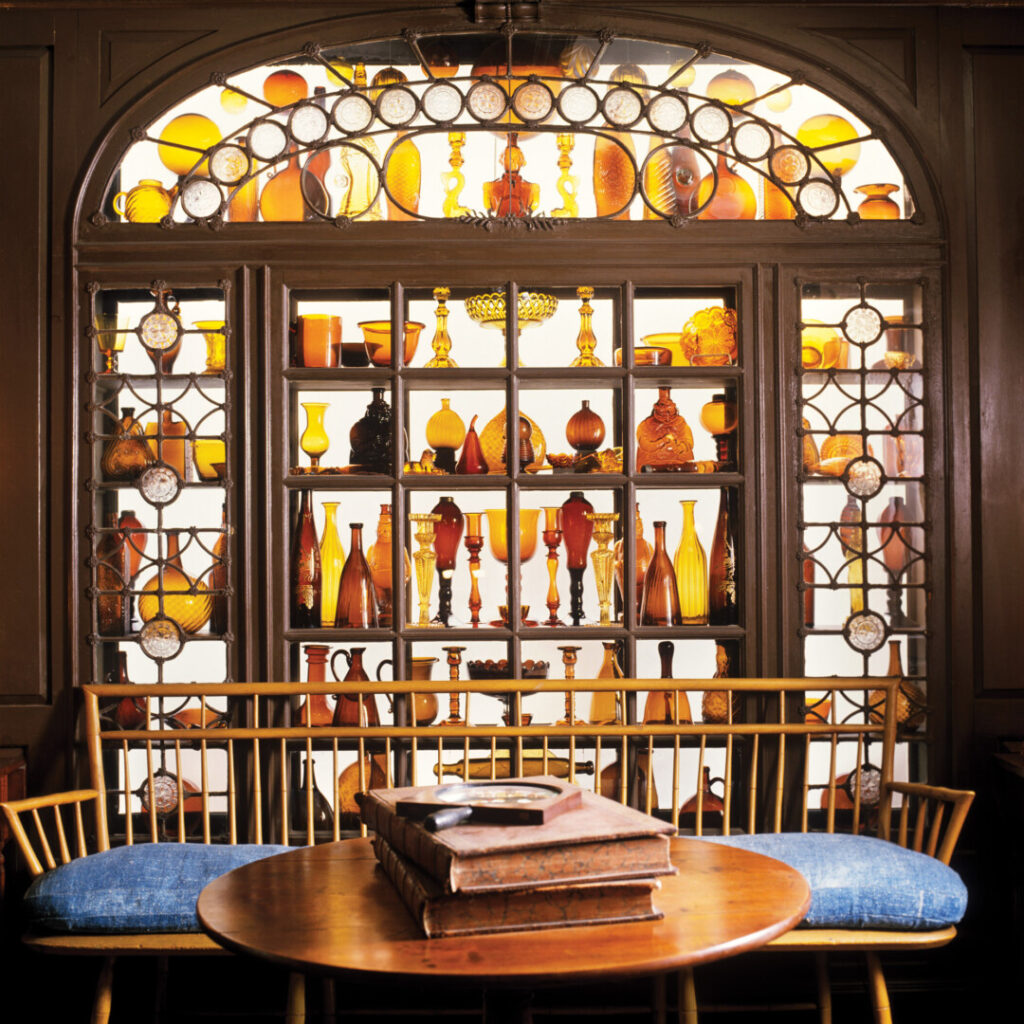
Eric Roth
Displaying Glass
Because of its translucence, glass is best displayed so that light moves through it. Consider glass-front cabinets with subtle integrated lighting. A mirrored back, or a mirror placed behind glass on a shelf, shows off both sides of the objects and also bounces light through them. A very effective and inexpensive display is on glass shelves set into a window well, backlit by daylight or a light source. Colored glass in a window will throw colored light into the room, changing with the angle of the sun. Glass objects can simply sit on a windowsill for a similar result. A very different effect is produced depending on whether all of the glass is in one color, or if colors are mixed.
For displays more than one object deep, glass is effective placed in front of white porcelain or stoneware.
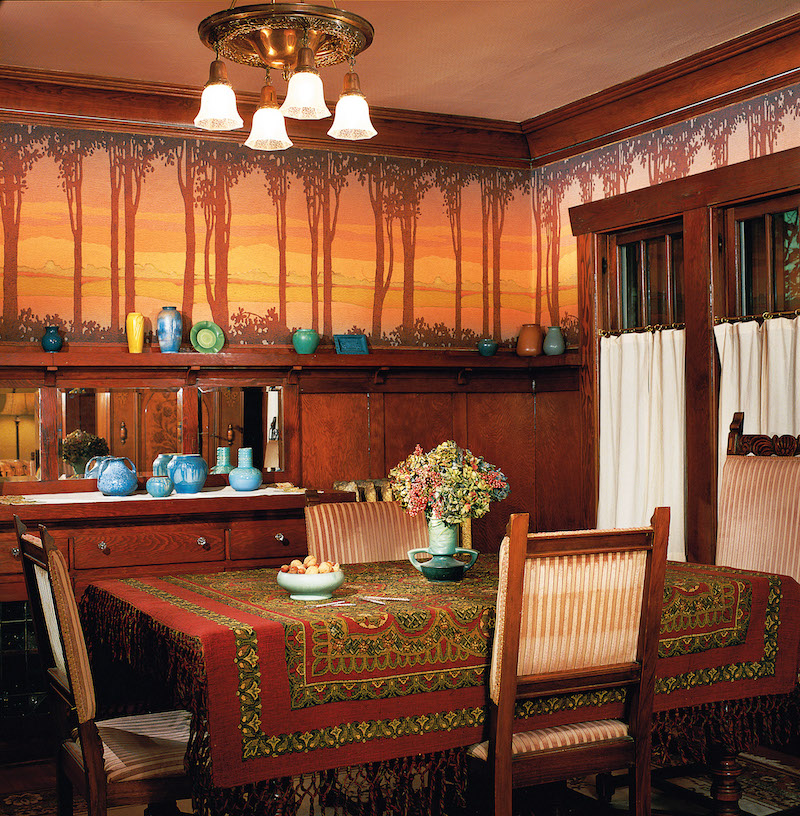
William Wright
Mantel & Plate Rail Displays
Traditional mantel displays include travel photos in frames; pottery; candlesticks; vases with or without flowers; leatherbound books; framed art tile; antique ceramics; smalls such as boxes, glassware, silver or pewter; and even finds from nature—a bird’s nest, pinecones, seashells. Whatever hangs on the wall above becomes part of the display, so choose something related (by time period or frame color, for example) and include it in the balance of the whole. On a plate rail, consider majolica, ceramics or pottery, copper platters, and teacups. Object clusters interrupted by empty space often works better than objects placed at regular intervals around the room. Experiment: it’s easy to move things or even change it up by season.
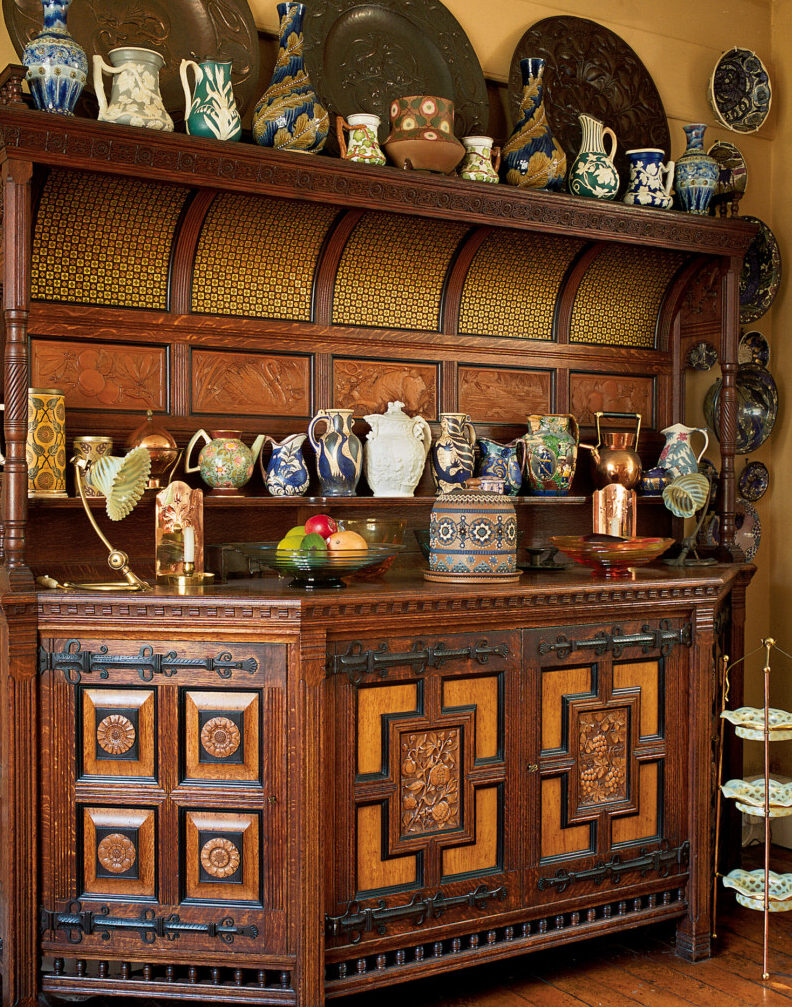
Huntley Hedworth
In Cabinets
Antique or new; freestanding, built-in, or wall-hung; with glass doors or open: A display cabinet often is best filled with a collection related to it. Think of enameled spatterware on an old painted hutch, and Victorian silverplate on a walnut sideboard. Create depth by placing some pieces in the background, others in front. Formal objects are best displayed in symmetrical arrangements, while casual and rustic items may be placed asymmetrically. Vary the heights of objects, even using pedestals to add height as needed.
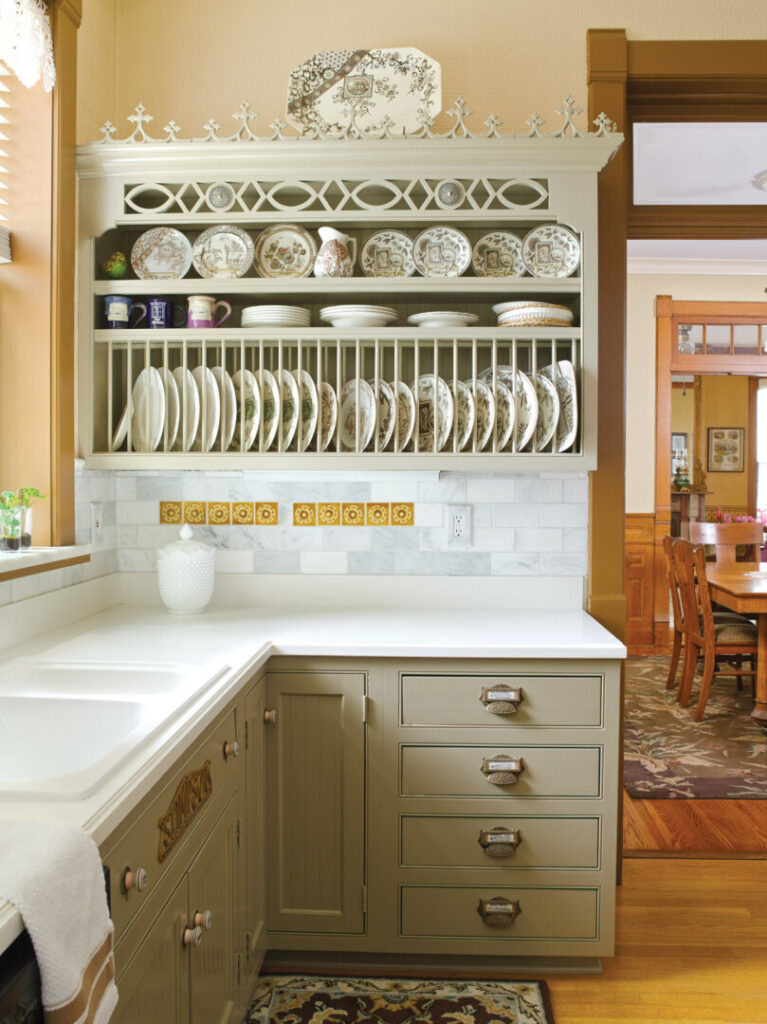
Gridley & Graves
Kitchen & Pantry
The finest display may be made up of objects we use daily: we get to touch them, and they won’t collect dust. Even the most mundane “collection” is elevated if it’s arranged en masse and for impact. Glassware, teacups, mixing bowls, and platters make wonderful display sets.
Collections placed for show end up atop cabinets that don’t reach the ceiling, on display shelves over the sink, or on shelves under a peninsula or island. The top shelf of a glass-front cabinet, too, may be reserved for a curated collection.
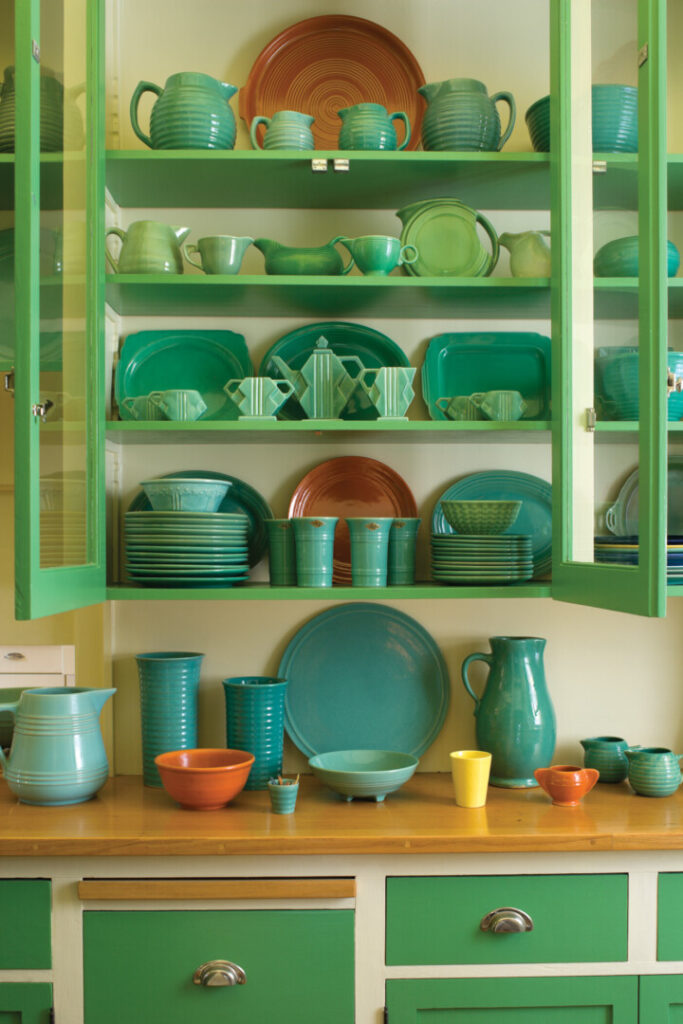
William Wright
Such affordable objects as colorful Depression glass, 20th-century dishware, vintage utensils or bowls may be collected in arrangements that lend stature to the objects and please the eye. Follow the same guidance as with any display, turning clutter into a collection by grouping objects together according to color, age, use, or shape. A nice collection may end up cueing the style and palette of the rest of the kitchen.
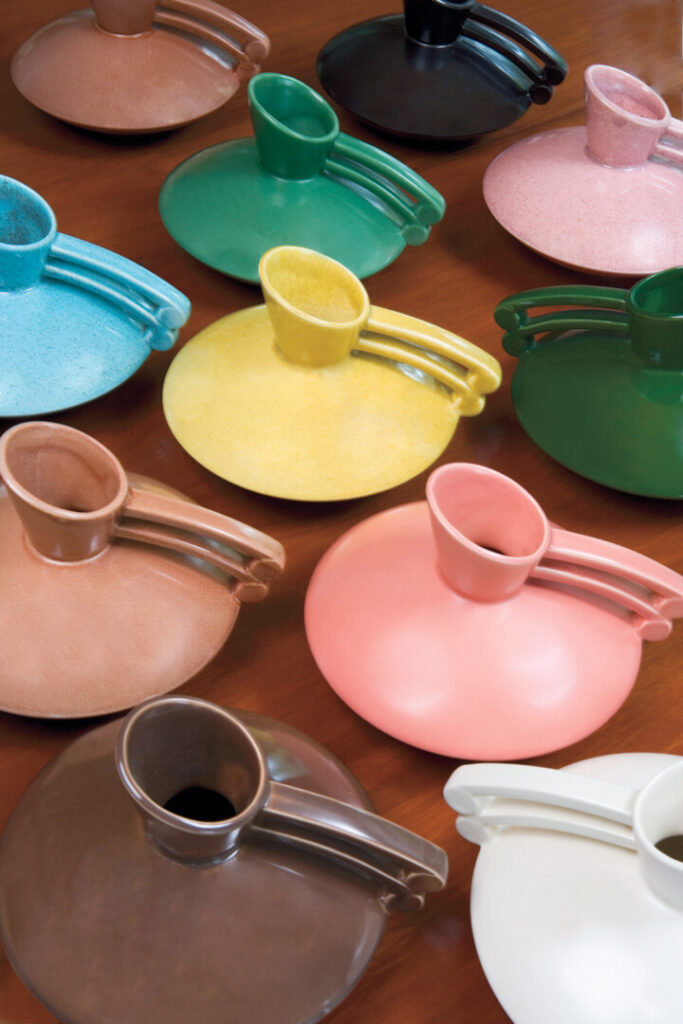
OHJ Archives
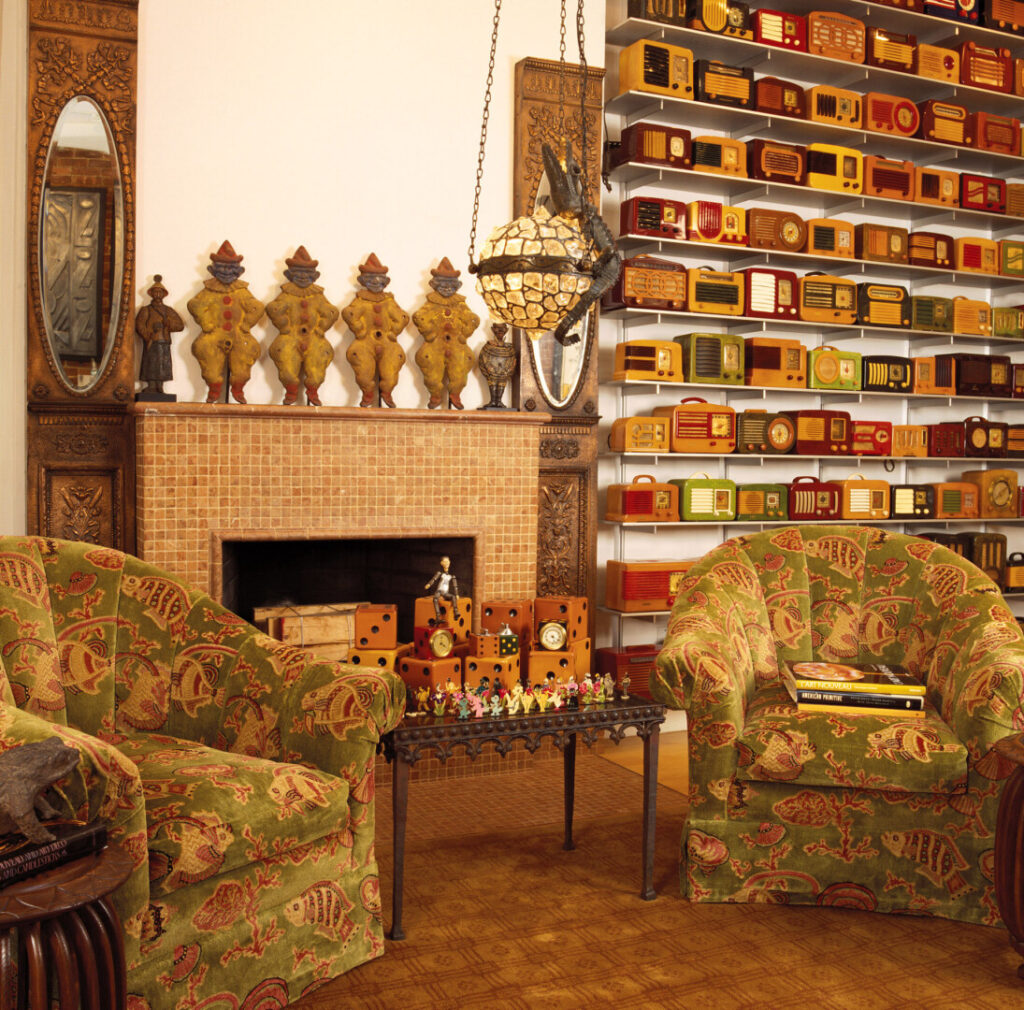
Dan Mayers







